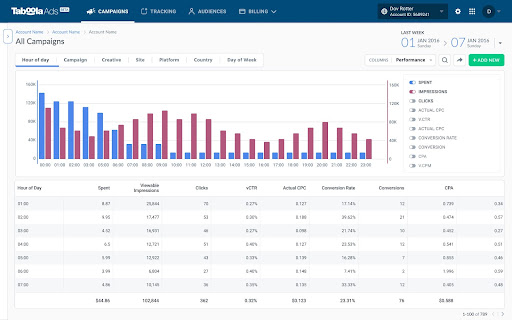High-quality, engaging content creation is just half the battle, as any content marketer will tell you. In addition to mastering content creation, content marketing success requires content promotion expertise.
Keep in mind that it won’t matter how great your content is if no one ever sees it.
Nowadays, marketers may choose from various methods and platforms that help them promote their content more effectively and efficiently.
You may significantly expand your content‘s reach using the tools outlined in this article. The following options range from free to paid. All the same, they’re all tried and true methods of content distribution that will help your marketing campaigns succeed.
The Three Primary Forms of Content-Distribution Channels
Let’s begin with a quick review of content distribution before we go into the tools. There are essentially three main routes you might use when disseminating your work.
- Owned
- Earned
- Paid
The networks you own and over which you have editorial control owned media. These may include your social media pages, website, email newsletter, and blog.
We call “earned media” when people talk about you or your work outside your organization. Social media shares, guest articles, press attention, and positive product reviews are all examples of this.
Paid media includes any forms of advertising in which the advertiser is required to pay for impressions, including but not limited to pay-per-click, display, and social media.
Material distribution may include several distinct routes for the same piece of content, as seen in this Venn diagram.

Owned
Website | Blogs | Social Media

Earned
Reviews | Mentions | Shares

Paid
Ads | Influencers | Promotions
Keeping this conceptual framework in mind, let’s investigate several instruments that facilitate content distribution across the three main distribution channels: owned, earned, and paid.
The 17 Most Effective Tools for Distribution of Content
The following tools can help you save time and get your content in front of more eyes, regardless of whether you use paid, owned, or earned media in your content marketing distribution strategy.
1. HootSuite
HootSuite is an all-inclusive content distribution platform that is packed with valuable extras. Schedule, manage, and post your content with ease across the most popular social networking platforms, including Facebook, Twitter, LinkedIn, etc.
Tumblr, YouTube, and corporate operations like sales and marketing may all benefit from their app collection and clever connections.
2. Buffer
We have discovered that using Buffer to distribute the material to our Twitter, Facebook, Google+, and LinkedIn accounts is one of the most convenient methods. Publish at convenient times by setting up a publication schedule (or let Buffer decide when is best).
You may save a lot of time using Buffer since it shows you which of your articles fared the best and instantly adds them back into the queue to be shared again.
3. AddThis
AddThis is a convenient tool for adding share and follow buttons to any website. The software effectively lowers bounce rates because of its emphasis on calls to action. Newsletters and reports may also benefit from compelling calls to action.
Visitors can efficiently distribute your information over the web without leaving the main page, subscribe to your social network accounts, and download materials.
4. HubSpot
HubSpot is a comprehensive inbound marketing platform with features such as email marketing, analytics, reporting, social listening tools, social media management, marketing automation, etc.
The material on numerous social networks may be tracked and published at the same time. Whether you’re running an email or PPC ad campaign, you can get the data from both in one place with the built-in Social Inbox tool.
Catapult Brand Demand with Strategic Content Marketing
Having a content-first approach helps you to create the authority in the sector and generate demand for your brand.
Contact Our Content Manager Now5. Goodbits
Put up a newsletter with some very incredible links (including the content of yours you want to distribute). With Goodbits, you can easily organize your reading material by dragging and dropping items from a queue that contains both the RSS feeds you’ve added using the bookmarklet or browser extension.
You may personalize and update the message before sending it to your contacts or MailChimp list and segments.
6. BuzzSumo
Using BuzzSumo may find the most influential people in your field who share material like yours. Then you can see the specific articles, subjects, and websites they often discuss with one another.
In addition to being able to export your data as a CSV or Excel document, you can also set up alerts to keep track of specific subjects, influencers, or rivals.
7. Medium
Writers may share their greatest work with Medium’s monthly user base of 60 million by republishing their work on the site. Medium’s homepage and daily digest are curated to feature the finest material published in various areas.
Users love this site because it prioritizes great material and its algorithms are immune to manipulation from likes and shares. A content’s performance and reach are improved if it is read more often.
8. MailChimp
When discussing email newsletters, one of the most popular and effective (and free) options is MailChimp. You have the option of creating campaigns from scratch or setting up an automatic system to send out your posts as you compose them.
Anyone with a mailing list of fewer than 2,000 people may sign up for a free MailChimp account.
9. SumoMe
SumoMe, a WordPress plugin, provides a useful set of features for boosting both owned and earned media. A number of list-building instruments, such as a subscription scroll box, a signup bar, a list popup, and an incentives/giveaways widget, are available from SumoMe for owned media.
Using SumoMe, it’s simple for people to share photos and the text from your blog articles, increasing the amount of earned media you get.
10. Tweriod
Tweriod is a Twitter scheduling tool that may help you tweet more often and reach more people with your content. Tweriod can help you figure out what to do next on Twitter by keeping tabs on how successful your tweets are and how your followers are doing. The service is easy to use and comes at no cost.
11. MeetEdgar
The social media scheduling tool Edgar has its unique twist. Edgar is “an automatic queue that never runs out of material,” in contrast to services like TweetDeck and Hootsuite, which need constantly adding fresh information if you want to keep sharing.
Once Edgar has disseminated all of your most recent changes, it will go back and republish any updates that your followers may have missed.
12. Taboola
Taboola is a content suggestion tool that allows high-quality publishers to add links to your articles and videos at the conclusion of their blog entries and news stories. An enormous number of people may now see your material thanks to this helpful resource.

This premium offering features a set of resources designed to boost your return on investment (ROI) via increased conversions, targeted advertising, and user retargeting.
13. PR Newswire
Is there any noteworthy information you could share? Getting in touch with the press is an option to think about. PR Newswire can aid in disseminating news, announcements, and events to many audiences.
When you join, a PR Newswire representative will contact you personally to activate your account and provide any promotional assistance you may need for your press releases.
14. SlideShare
Presentation slideshows may be uploaded to SlideShare or used as an embedded piece of content on websites and blogs. Slides may be distributed through email, Facebook, Twitter, and Scoop. It, and Reddit, thanks to its interaction with content marketing platforms.
You may also utilize this platform to share files, such as promotional brand presentations.
15. Buzzstream
Buzzstream’s arsenal of link-building services is extensive. Discover niche influencers that could be interested in sharing your content and streamline your outreach from list development to response measurement.
16. StumbleUpon
Including StumbleUpon in your content distribution plan is a great move. To put it simply, it facilitates the stumbling upon entertaining and informative material online. By tracking your responses on an attractive interface, it learns what you like and don’t like and uses that information to tailor its content recommendations to you.
To increase exposure for their work, creators may utilize the platform to have their posts show up in the feeds of random individuals.
17. Contently
As a content marketplace, Contently is widely used by freelance writers and journalists. Contently is essentially a content production platform linking freelancers with different companies.
It also provides interesting tools for content marketing distribution, administration, and production. A writer’s work may be found in one central portfolio, where it can be promoted to readers in any niche. You may use these authors to spread the word about your content on the site.
Conclusion
With so much information available online, it’s helpful to have a centralized location where consumers can search for particular pieces of data. Additionally, you may choose the best platform for reaching your target audience as part of your content distribution strategy.
Put your knowledge to the test, but bear in mind that a high-quality content distribution plan begins with a high-quality content creation process.
Reviewed By
-
algorithmchttps://blog.algorithmc.com/author/algorithmc/
-
algorithmchttps://blog.algorithmc.com/author/algorithmc/
-
algorithmchttps://blog.algorithmc.com/author/algorithmc/
-
algorithmchttps://blog.algorithmc.com/author/algorithmc/



